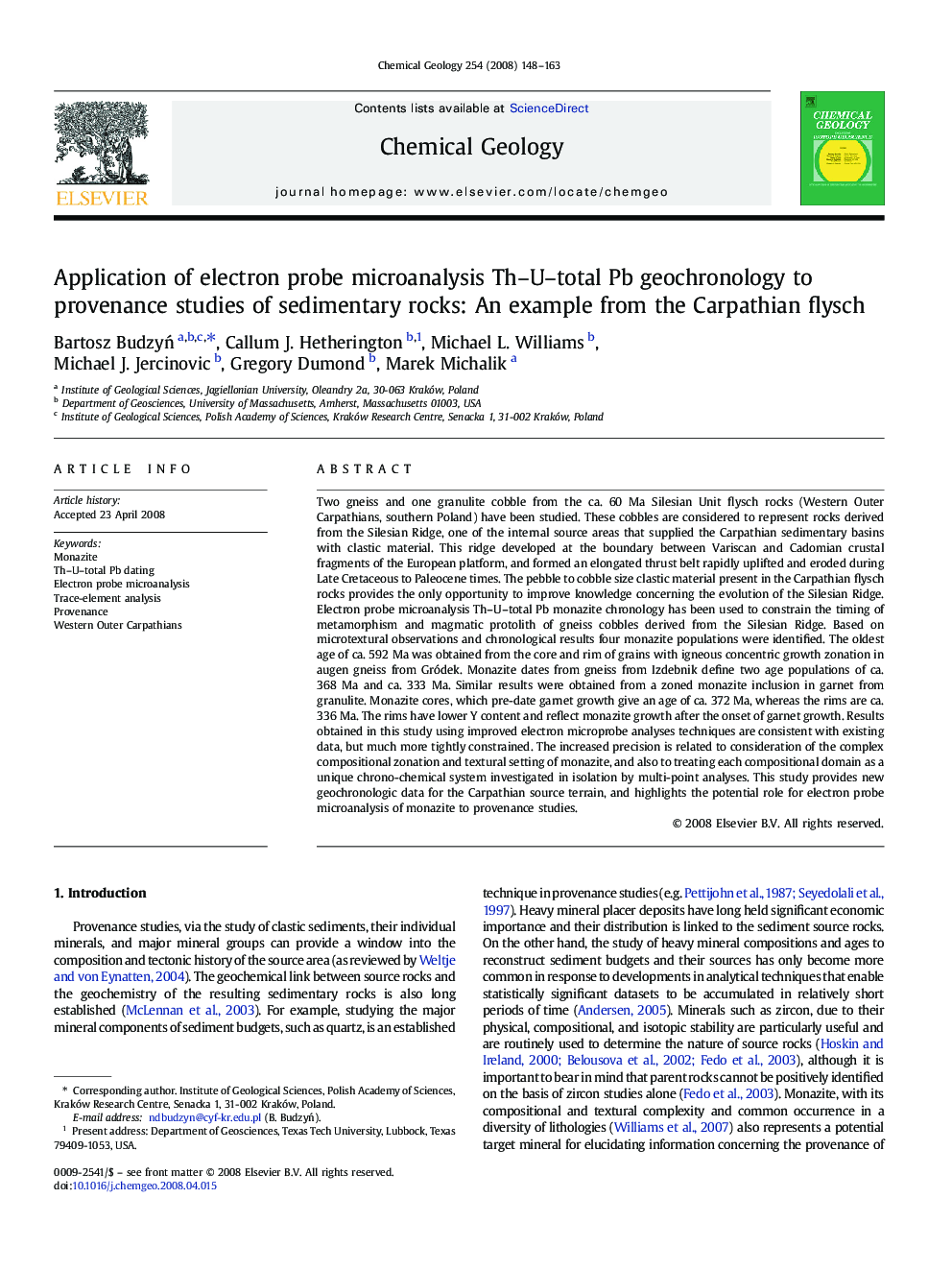| کد مقاله | کد نشریه | سال انتشار | مقاله انگلیسی | نسخه تمام متن |
|---|---|---|---|---|
| 4700636 | 1637723 | 2008 | 16 صفحه PDF | دانلود رایگان |

Two gneiss and one granulite cobble from the ca. 60 Ma Silesian Unit flysch rocks (Western Outer Carpathians, southern Poland) have been studied. These cobbles are considered to represent rocks derived from the Silesian Ridge, one of the internal source areas that supplied the Carpathian sedimentary basins with clastic material. This ridge developed at the boundary between Variscan and Cadomian crustal fragments of the European platform, and formed an elongated thrust belt rapidly uplifted and eroded during Late Cretaceous to Paleocene times. The pebble to cobble size clastic material present in the Carpathian flysch rocks provides the only opportunity to improve knowledge concerning the evolution of the Silesian Ridge. Electron probe microanalysis Th–U–total Pb monazite chronology has been used to constrain the timing of metamorphism and magmatic protolith of gneiss cobbles derived from the Silesian Ridge. Based on microtextural observations and chronological results four monazite populations were identified. The oldest age of ca. 592 Ma was obtained from the core and rim of grains with igneous concentric growth zonation in augen gneiss from Gródek. Monazite dates from gneiss from Izdebnik define two age populations of ca. 368 Ma and ca. 333 Ma. Similar results were obtained from a zoned monazite inclusion in garnet from granulite. Monazite cores, which pre-date garnet growth give an age of ca. 372 Ma, whereas the rims are ca. 336 Ma. The rims have lower Y content and reflect monazite growth after the onset of garnet growth. Results obtained in this study using improved electron microprobe analyses techniques are consistent with existing data, but much more tightly constrained. The increased precision is related to consideration of the complex compositional zonation and textural setting of monazite, and also to treating each compositional domain as a unique chrono-chemical system investigated in isolation by multi-point analyses. This study provides new geochronologic data for the Carpathian source terrain, and highlights the potential role for electron probe microanalysis of monazite to provenance studies.
Journal: Chemical Geology - Volume 254, Issues 3–4, 15 September 2008, Pages 148–163